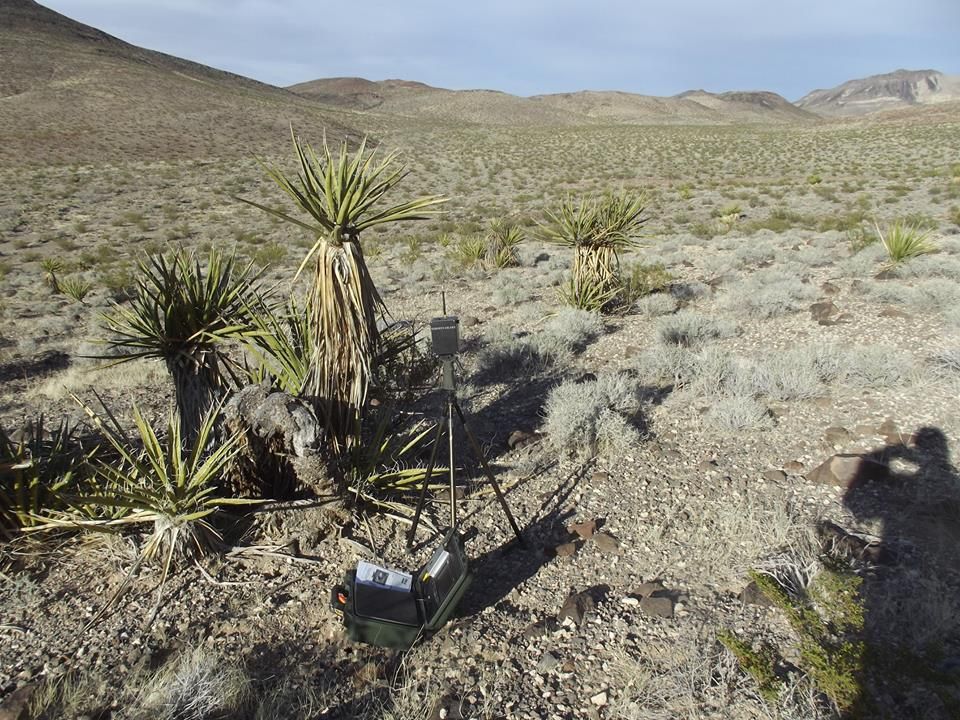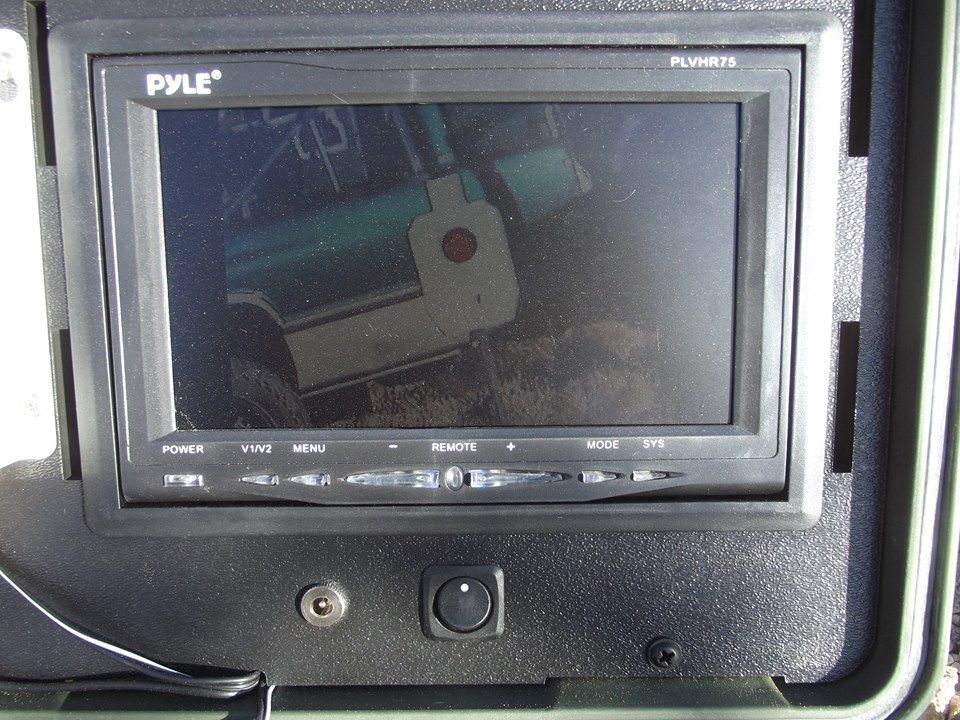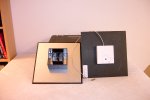I had been waiting for an excuse to test my TargetCam since I bought it last Summer - been persevering through gun-build lead times, and still am. In any case, I decided to get out before the heat of the Summer hit. So, last Saturday (4/5) my daughter and I ventured out into southern California's "high desert" to a location I had identified through mapquest - a very long (about 6 mile) stretch, virtually dead straight, and virtually uninhabited. The road goes up a shallow incline from base to ridge, where it makes a left turn. It was a bright, clear day. We set up at almost the top of the ridge.
Please note that my TargetCam setup is a bit different from the one shown on their website (www.targetcam.net) as I had them supply a pair of directional antennas (added $100 to my cost). Those antenna are normally used with remote control, FPV (first-person-view), model airplanes. They are of a crosshair design and operate at 1.3GHz. I also acquired (separately) a 25 foot long, LMR400 cable - so I could mount the camera well out of the line of fire.
For my testing the camera was placed about 10'-12' in front of the target and about one foot in the air (on a short tripod). I taped an NBRSA 1000 yard target over the center of my "target reflector" (a 5.5'x 7.5' Harbor Freight reflective tarp strung between a pair of 3/4" X 6'long dowels - actually, as it turned out, between one of those dowels (held by my daughter at the edge of the roadway) and a 50 MPH speed limit sign. The target was to provide an appropriate image upon which to base my assessment.
The TargetCam setup was easy enough, though setting up my"target reflector" was much less so - lots of surface area for the wind to mess with. [The large size was for the second purpose of my trip - to test the "reflector" as a distance gauge for placing targets in the field using my laser range fire - aV ectronix Terrapin, which read to 3626 yards four times in a row at my "two mile" stopping point - no signal at the 3 mile mark.] The antenna at the target end (up hill location) was mounted to a very sturdy tripod, about 6 feet off the ground. [The TargetCam folks were very clear in advising me to get the antennas up as high in the air as possible.]
Once everything was set up - with a nice clear image on the "control box/monitor unit" (black box) screen - I took the black box and headed down the road. I traveled in steps, one mile at a time, by my trip odometer. Suffice to say, the image remained the same clear quality all the way to five (5) MILES! It was awesome to see the tear in the paper target flapping in the breeze from 5 miles away. I could not see the target at all, I just aimed the second antenna (which was mounted about 5 feet in the air on another sturdy tripod) at the location where I'd left it. I am reasonably sure I could have picked up the image just as clearly much further down the road. But to what purpose? So I stopped there.
Bottom line...a clear picture at a distance so far beyond practical that "maximum range" is no longer a concern. Great hardware!
Sorry no pics - reminder to cameraperson, when loading thecamera, insert BOTH fresh battery and a memory card. 70-80 supposed shots later, and about 120miles down the road, reality struck. Noplans for a replay. I got the info Ineeded and more.
Please note that my TargetCam setup is a bit different from the one shown on their website (www.targetcam.net) as I had them supply a pair of directional antennas (added $100 to my cost). Those antenna are normally used with remote control, FPV (first-person-view), model airplanes. They are of a crosshair design and operate at 1.3GHz. I also acquired (separately) a 25 foot long, LMR400 cable - so I could mount the camera well out of the line of fire.
For my testing the camera was placed about 10'-12' in front of the target and about one foot in the air (on a short tripod). I taped an NBRSA 1000 yard target over the center of my "target reflector" (a 5.5'x 7.5' Harbor Freight reflective tarp strung between a pair of 3/4" X 6'long dowels - actually, as it turned out, between one of those dowels (held by my daughter at the edge of the roadway) and a 50 MPH speed limit sign. The target was to provide an appropriate image upon which to base my assessment.
The TargetCam setup was easy enough, though setting up my"target reflector" was much less so - lots of surface area for the wind to mess with. [The large size was for the second purpose of my trip - to test the "reflector" as a distance gauge for placing targets in the field using my laser range fire - aV ectronix Terrapin, which read to 3626 yards four times in a row at my "two mile" stopping point - no signal at the 3 mile mark.] The antenna at the target end (up hill location) was mounted to a very sturdy tripod, about 6 feet off the ground. [The TargetCam folks were very clear in advising me to get the antennas up as high in the air as possible.]
Once everything was set up - with a nice clear image on the "control box/monitor unit" (black box) screen - I took the black box and headed down the road. I traveled in steps, one mile at a time, by my trip odometer. Suffice to say, the image remained the same clear quality all the way to five (5) MILES! It was awesome to see the tear in the paper target flapping in the breeze from 5 miles away. I could not see the target at all, I just aimed the second antenna (which was mounted about 5 feet in the air on another sturdy tripod) at the location where I'd left it. I am reasonably sure I could have picked up the image just as clearly much further down the road. But to what purpose? So I stopped there.
Bottom line...a clear picture at a distance so far beyond practical that "maximum range" is no longer a concern. Great hardware!
Sorry no pics - reminder to cameraperson, when loading thecamera, insert BOTH fresh battery and a memory card. 70-80 supposed shots later, and about 120miles down the road, reality struck. Noplans for a replay. I got the info Ineeded and more.





